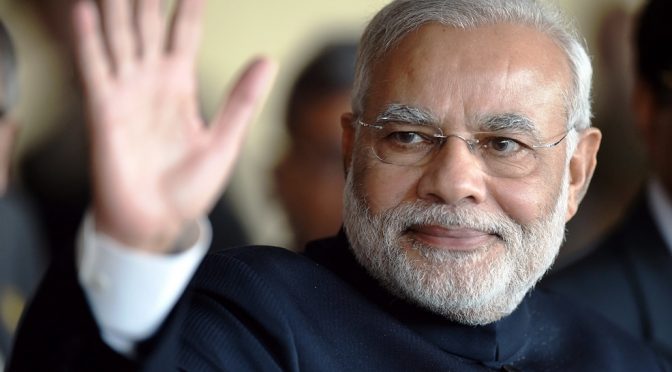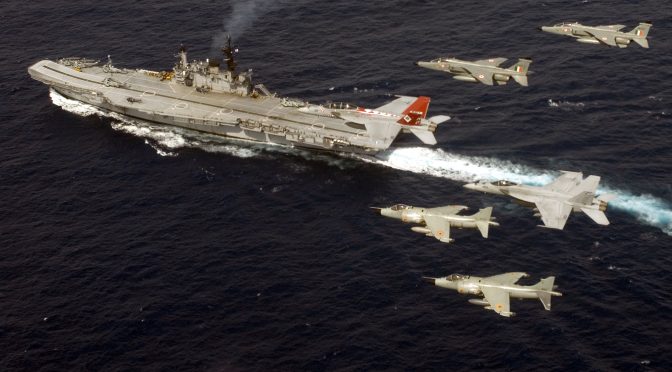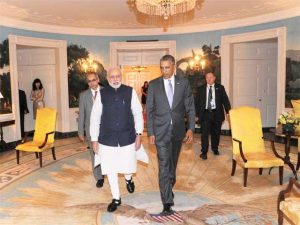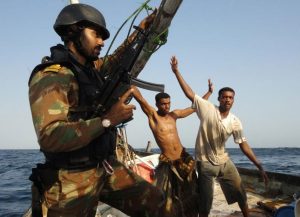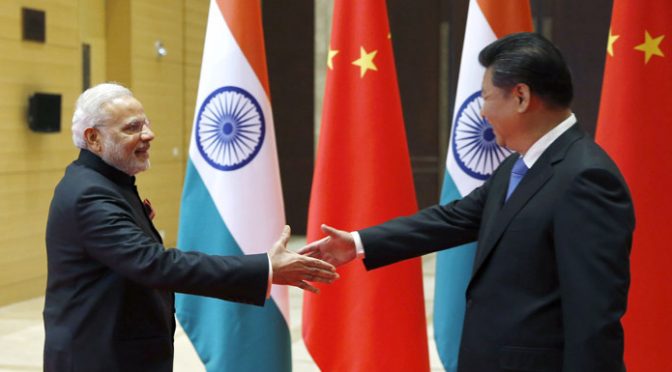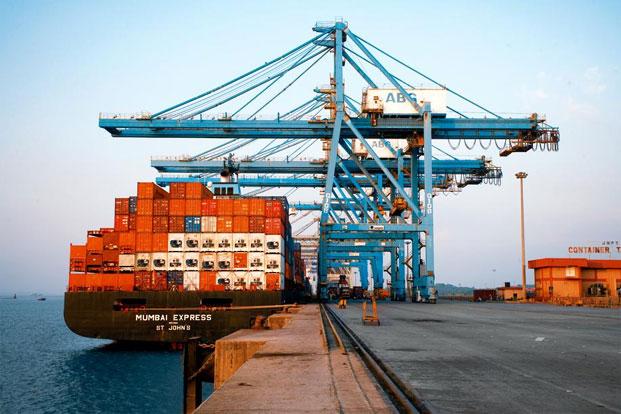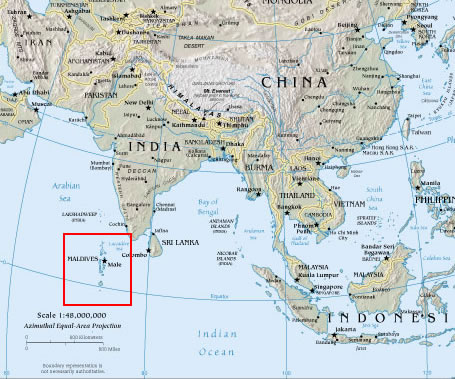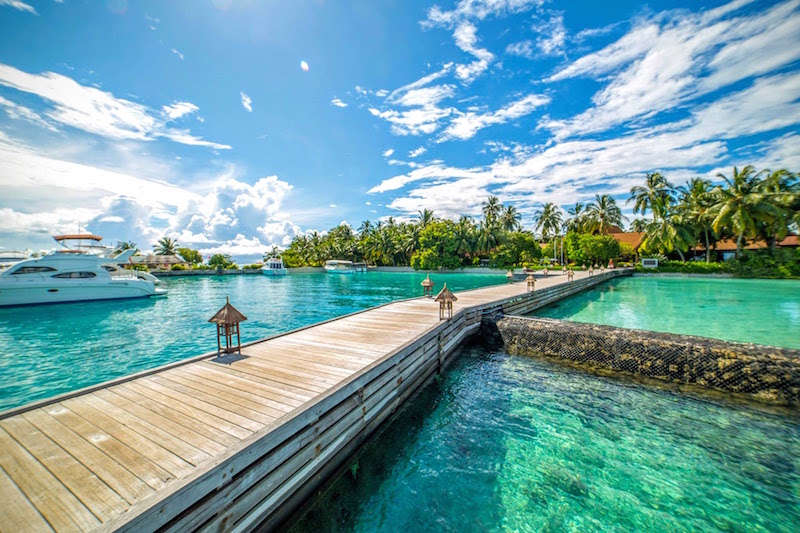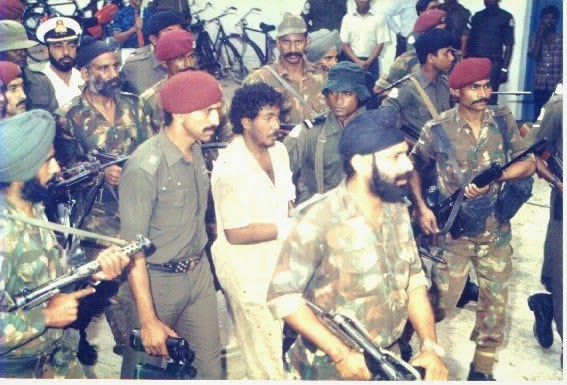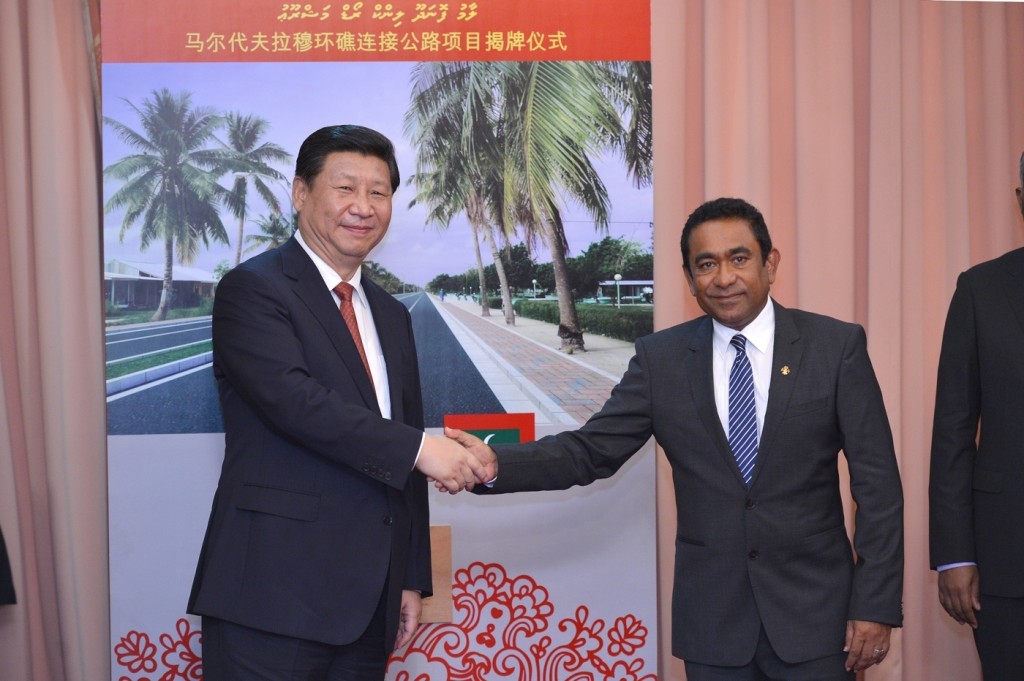India’s Role in the Asia-Pacific Topic Week
By Vivek Mishra
The Modi government’s strongly maritime oriented foreign policy launched in 2014 has proven somewhat rewarding, particularly in helping the Indian Navy transcend its image of a force that punches below its weight. The politico-strategic recalibration by India in its Asia-Pacific policy has sought to retool its mid-1990s Look East policy with more purpose. The Act East Policy announced in November 2014 intends to counterweigh its desire to improve relations with ASEAN countries on one hand and increase India’s strategic regional footprints in the Asia-Pacific on the other.
India’s new Asia-Pacific policy has been the result of its ever increasing economic, political, and military stakes in the region. It was a rare moment in this regard when India became a Full Dialogue Partner of ASEAN in 1995 and a member of the ASEAN Regional Forum (ARF) in 1996. India’s Asia-Pacific push further manifested in 2010 when the India-ASEAN Free Trade Agreement (AIFTA) came into effect in January 2010 with regard to Malaysia, Singapore and Thailand. The economic component of India’s Asia-Pacific policy is pivoted around India-ASEAN trade which reached stood at $76.52 billion in 2014 and is expected to cross $100 billion in the future.
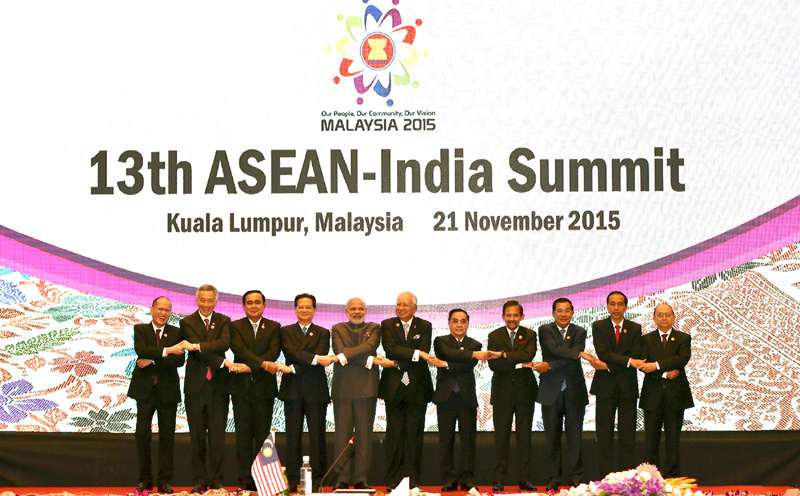
Modi and the Asia-Pacific
Prime Minister Modi’s Act East policy, launched within months of his assuming office in May 2014, was an effort to coalesce India’s economic goals with its strategic determinations in the Asia-Pacific. In this regard, India expected to leverage its partnerships not just with the countries of Southeast Asia but Japan, Australia, and the US in advancing its evolving interests in the Asia-Pacific region. One of such evolutionary interests has been India’s changed stance on the South China Sea (SCS); transitioning from a combination of indifference and apprehension to clarity. This was put across by none other than Prime Minister Modi himself at the ASEAN-India Summit in November 2015 when he brought up the disputes in the SCS and conveyed India’s expectations on the implementation of the Declaration on the Conduct of Parties in the SCS. By evoking the Code of Conduct in the Asia-Pacific Maritime domain Modi also depicted India’s resonance with other countries sharing its apprehensions in the region like the US, Philippines, Vietnam and Japan.
These policy enunciations by India were buttressed by actions that sought to advance its interests in the Asia-Pacific region. Within six months of coming to power the Modi government offered a $300 million credit line to Vietnam for trade diversification. The trade diversification grant was also understood as India’s push for diminishing Vietnam’s trade dependence on China and a simultaneous increase in the country’s expenditure in India’s flagship Make in India initiative. The line of credit complimented an earlier credit of $100 million in the preceding month to help Vietnam in defense procurement and the modernization of its armed forces, including submarine training. This investment was specifically directed towards procurement of four offshore patrol vessels that are anticipated to patrol Vietnam’s littoral besides the Indo-Pacific.

India’s increased focus on the Indo-Pacific has also been a result of its recent policy tweaks. Its increasing cooperation with countries of Southeast Asia, Japan Australia, and the US in this region stands as testimony of the same. The Indian Prime Minister’s personal connection with the Japanese leader is often synonymous with a unified Asian nationalism symbolised by the ethos of a common “world of Narendra Abe.” While the two leaders’ connection lends currency to the possibility of India’s increased role in the Asia-Pacific, it also feeds of the potential of an anti-China coalition in Asia. Japan has been included in the annual MALABAR series of naval exercises as a permanent member despite Chinese oppositions. The focus of 2015 trilateral MALABAR exercise; destroying hostile submarines, surface warships and aircraft, caused significant angst in Beijing. The strategic rivalry in the maritime domain is a reality between India and China. Even as India continues to push for strong and better relations with the countries of the Asia-Pacific, such pursuits cannot be detached from an anti-China criticism. For instance, the anti-submarine focus of the AUSINDEX 15 exercise was seen as a developing response by both India and Australia to China’s submarine deployments in the Indian Ocean.
The year 2015 was also crucial for India’s Asia-Pacific policy as an important break came in India-Australia strategic cooperation. India and Australia conducted their first bilateral naval exercise, the aforementioned AUSINDEX 15, focused on anti-submarine warfare. While Australia sent its Lockheed Martin P-3 anti-submarine reconnaissance aircraft, India employed its Boeing P-8 long-range anti-submarine aircraft. Besides building on the Framework for Security Co-operation announced by the Australian and Indian Prime Ministers in 2014, AUSINDEX showed a bilateral willingness to deepening defense cooperation in the Indian Ocean and the Indo-Pacific. The desire to attain better navy-to-navy relations and to attain a high level of interoperability between the two navies suggests an interest mutual cooperation between the two countries in the Indian Ocean, Indo-Pacific and the larger Asia-Pacific region.
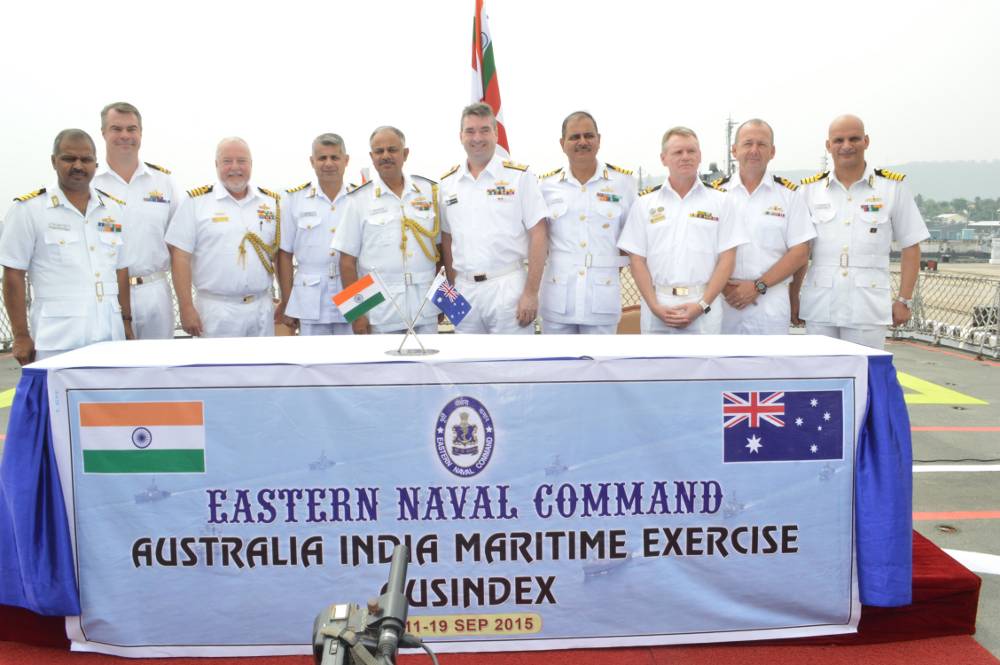
Besides partnerships with some of the bigger countries in the Asia-Pacific, India has also focused on smaller countries. Brunei, a small but crucial country locked in territorial dispute with China, figured in India’s latest Asia-Pacific calculus. The Modi government’s outreach to the small nation resulted in some important agreements between the two nations. Both the countries signed a defense MoU that includes four major areas: exchange of visits at different levels; exchange of experience, information, and training; conduct of joint military exercises, seminars and discussions; and cooperation between defense industries. Especially, naval ship visits from each country and training of armed forces were steps aimed at expanding India’s strategic footprints in the Asia-Pacific.
India’s Cooperation with the US in the Asia-Pacific
India’s Asia-Pacific policy is hinged on its policies in the Indian Ocean and importantly, on its concerns with policies in the overlapping maritime region, the Indo-Pacific. India’s increasing focus on the Indo-Pacific together with its recalibrated Indian Ocean focus has given credence to the thought that India might be actively considering expanding its patrols in the Asia-Pacific region. Recent speculations about Indo-US joint patrols in the SCS, although debunked, constitutes a possible reality in the pipeline. This exercise, however realistic an assumption, is most likely to be a joint exercise with other countries. Most notably, this prospect is associated with the “U.S.-India Joint Strategic Vision for the Asia-Pacific and Indian Ocean Region” signed during President Obama’s visit to India January 2015. The document, in highlighting common grounds for the countries on issues of freedom in navigation and overflight vis-a-vis the South China Sea, was a first in the direction of fostering cooperation between the world’s oldest and largest democracies in the Asia-Pacific maritime domain. This sentiment was reiterated by both the countries in the latest joint statement between the US Defense Secretary, Ashton Carter and India’s Defense Minister, Manohar Parrikar. Ashton Carter’s three day visit was an effort toward materializing the possibility of increasing India’s Asia-Pacific role. Interestingly, this visit was preceded by an assertion in New Delhi by Adm. Harry B. Harris, Jr, chief of the Pacific Command, that called for both the US and India to be “ambitious together.” He also pointed out the Indo-Pacific as the strategic intersection of India’s Act East policy and the US’ rebalance strategy.
Even as the US continues to push for a strong relationship with India in the defense sector, many of the implications of the bilateral relationship are being played out in the maritime domain. The waning sheen of the US’ rebalance strategy has forced the US to think of alternative ideas to prop up the rebalance’s ability in shaping the future geostrategy of the Asia-Pacific. The Indo-Pacific and the Indian Ocean have emerged as the south-west leg of the US’ rebalance strategy to manage China, amidst an environment that is being increasingly characterized by a diminishing mutuality in relations between the US and its non-NATO alliance partners in the Asia-Pacific.
India’s Mandate for the Asia-Pacific
As India evolves as a regional power and a global economy, there is a commensurate change in its role. India is now willing to don the role of a net security provider in the Indian Ocean and the Asia-Pacific region. India’s anticipated role in the Asia-Pacific derives its political and ethical mandate from a need to ensure freedom of navigation in the region, even as an unprecedented rise in trade transit through the Indian Ocean and the Indo-Pacific is taking place. Between 1992 and 2012, the average number of ships in the Bay of Bengal and the Arabian Sea jumped by over 300 per cent. Non traditional threats in the region like terrorism and piracy significantly factor in that assessment. The other reason is the imminent threat that emerges from the possibility of maritime area denial by China, especially in the Strait of Malacca. Albeit easily deniable, a somewhat less openly talked reason is New Delhi’s increasing ability to respond to Beijing’s access to the Indian Ocean, at least in posturing if not otherwise.
This idea of commensurate maritime state response from India is intrinsically linked to the Great Game that is being played in the Asian maritime theatre between the US, India, Japan, Australia, and China. The Asia-Pacific region figures crucially by a natural extension of India’s Great Game.
Vivek Mishra is a Fulbright visiting scholar at the Saltzman Institute of War and Peace Studies, from August 2015 through May 2016. Originally from India, he is a PhD candidate in Jawaharlal Nehru University in New Delhi. Vivek is writing his PhD thesis on “American Maritime Strategy in the Indian Ocean in the Post-Cold War Era, 1990-2012.” Specifically, his research involves analyzing the evolution of the US naval presence in the Indian Ocean; the American strategy in the Indian Ocean in the Post-Cold War Era; the US naval relations with key regional navies like India, China, Australia and Pakistan; and the role of the US in tackling non-traditional security threats like piracy and terrorism.
Featured Image: Indian Prime Minister Narendra Modi. (Evaristo Sa/Getty Images)

